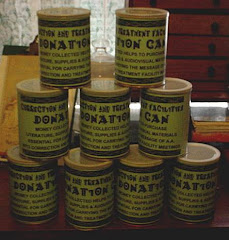TWELVE CONCEPTS OF WORLD SERVICE
CONCEPT 1
The Twelve Concepts for World Service represent the third of the three legacies of Alcoholics Anonymous – the first legacy being Recovery, as represented by the Twelve Steps, the second being Unity represented in the Twelve Traditions. The Twelve Concepts were written by Bill W. in 1952 and adopted by the 12th Annual General Service Conference of AA in 1962.
What are the Concepts?
• they are an interpretation of AA’s world service structure
• they reveal how the service structure arrived in its present form
• they detail the experience and reasoning on which our operation stands today
• they record the “why” of our service structure so that the experience and lessons of the past are not forgotten or lost
What do the Concepts do?
• The Steps hold us together
• The Traditions hold the group together
• The Concepts hold A.A. together
Concept 1 reads:
The final responsibility and the ultimate authority for AA world services should always reside in the collective conscience of our whole Fellowship. This concept is illustrated in the inverted triangle with the groups at the top and the General Service Board at the bottom.
The groups assumed that responsibility and authority for AA service activity at the St. Louis International Convention in 1955 – when on behalf of Dr. Bob, the Trustees and AA’s old-time leaders, Bill made the transfer of world service responsibility to the entire fellowship.
The service structure was not always this way – how did this come about?
Our founders had established the original world service structure – creating The Alcoholic Foundation, later the General Service Board of Alcoholics Anonymous – to perform services for AA as a whole that could not be performed by single groups or areas – literature, public relations policy for AA as a whole, helping new groups get established, a regular magazine.
However, responsibility and accountability remained with the Trustees who in turn looked to the founders, the old timers for guidance – many believed it should remain such, that a representative conference to whom they would be accountable would not work – and the membership at large was more concerned with group life than world services.
When in 1948 Dr, Bob became ill, it became evident that AA could not forever remain dependent on the founders for direction, that a new broad based representative structure was required, to provide direction to the trustees and a link between the board and the many groups, to ensure the continuation of world services.
There was another reason for this shift of responsibility – Tradition Two which states – For our group purpose, there is but one ultimate authority – a loving God as he may express Himself in our group conscience. The main principles were clear – AA groups are to be the final authority and their leaders are to be entrusted with delegated authority only.
Tradition Two was written and published in 1945. The first experimental General Service Conference was held in 1951 to see if the Tradition could be successfully applied to AA as a whole including trustees and founders, whether the conference could and would assume ultimate responsibility for the world service organization. By 1955, even the skeptics were convinced that the General Service Conference representing the group conscience of AA world wide was going to work and work permanently. And so “final responsibility and ultimate authority” was transferred to the fellowship as a whole.
The Twelve Concepts were written by Bill to detail how this world service structure would work. That structure has survived the decades – today, still ultimate responsibility remains with the group – Concept 1. And our role, as General Service Representatives, is to serve as the link between our group and AA as a whole – carrying the message from and to the group from district, area, GSO.
Monday, March 5, 2007
Subscribe to:
Post Comments (Atom)



No comments:
Post a Comment